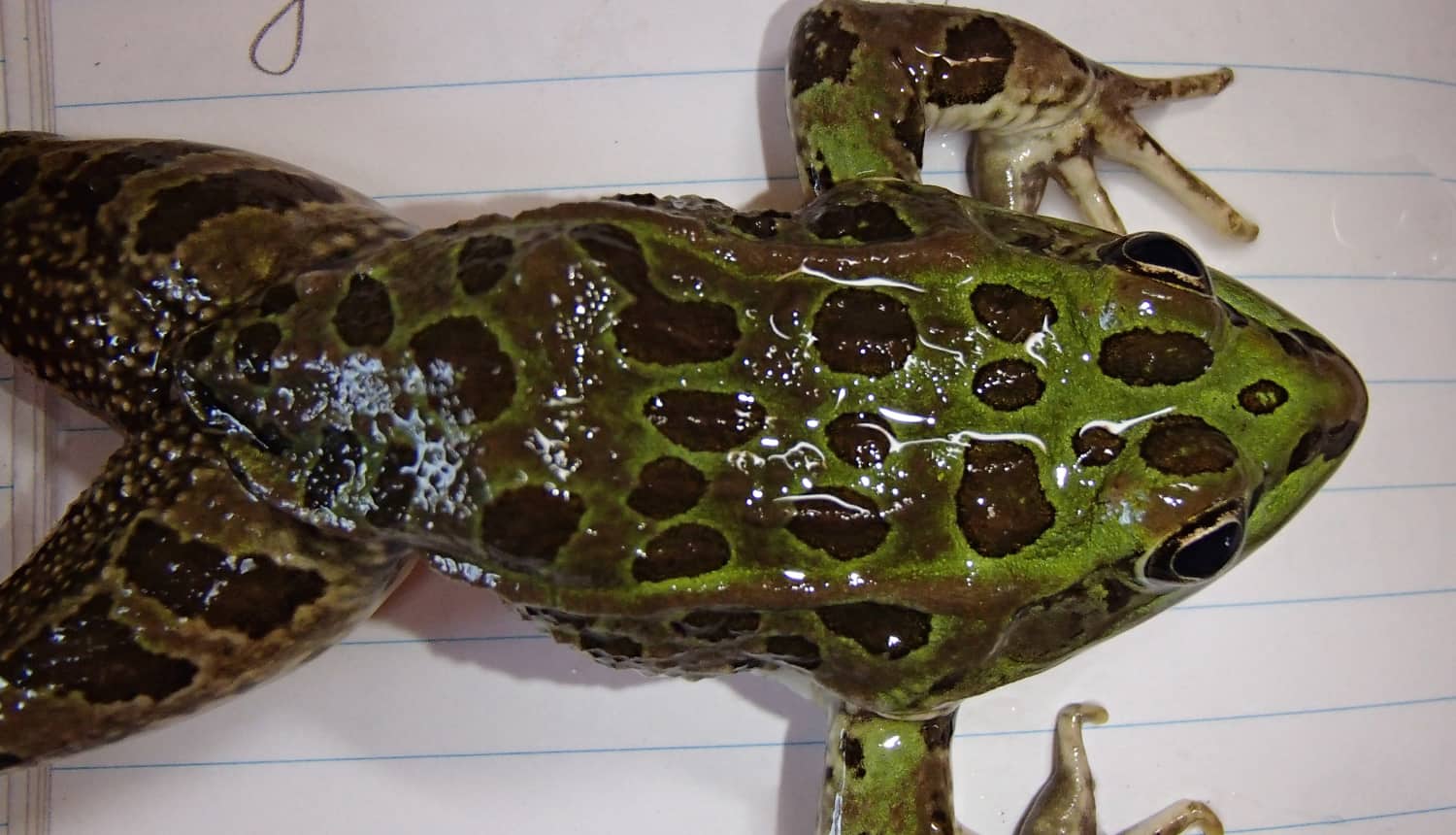
Species
Chiricahua Leopard Frog (CLF; Lithobates chiricahuensis)
Principal Biologist(s)
Magnus McCaffery, Hanne Small
Project Location
Ladder Ranch, NM
Conservation Problem
Range-wide decline of CLF due to a suite of factors, including disease; invasive species; habitat degradation and loss; and increased severity/duration of drought
Conservation Status
– Listed as threatened under the Endangered Species Act (ESA) in 2002
– Listed as a Species of Greatest Conservation Concern by the New Mexico Department of Game and Fish (NMDGF)
Project Goals & Objectives
We aim to work in partnership with the CLF Recovery Team to achieve range-wide recovery that results in the delisting of the species from the ESA. To this end, our CLF conservation strategy on the Ladder Ranch incorporates three core objectives.
1. To maintain and expand wild CLF populations on the Ladder Ranch
2. To maintain captive refugia and captive breeding facilities for on- and off- ranch frog populations
3. To further CLF conservation by securing grants, research, developing effective conservation methods, and collaborating with partners.
Project Background
TESF has worked in partnership with the U.S. Fish and Wildlife Service, and the NM Department of Game and Fish to conserve Chiricahua leopard frogs on the Ladder Ranch since 2001. The conservation value of the Ladder Ranch’s 62,950 ha of diverse habitat in New Mexico cannot be overstated. As home to the last, large CLF population in New Mexico, the Ladder Ranch plays a crucial role in the survival of this species. The ranch is one of four CLF Management Areas within the Mimbres-Alamosa CLF Recovery Unit, and is at the northern extent of the Chihuahuan Desert. From a broader conservation perspective, the Chihuahuan Desert Ecoregion is a WWF Global 200 Priority Ecoregion, conservation of which will help maintain a broad diversity of Earth’s ecosystems, and the Ladder Ranch itself is recognized as a Key Conservation Area by The Nature Conservancy.
Numerous factors have been implicated in the range-wide decline of Chiricahua leopard frogs, including: disease, nonnative species invasions, habitat degradation, and an increase in the severity and duration of drought events. Perhaps in response to reduced natural habitat availability and drying climatic conditions, these frogs have been found to naturally colonize man-made livestock water tanks. This behavior prompted us to incorporate the Ranch’s extensive stock-water infrastructure into a comprehensive Chiricahua leopard frog conservation program on the Ladder Ranch, which includes wild and captive population management, as well as captive breeding efforts.
